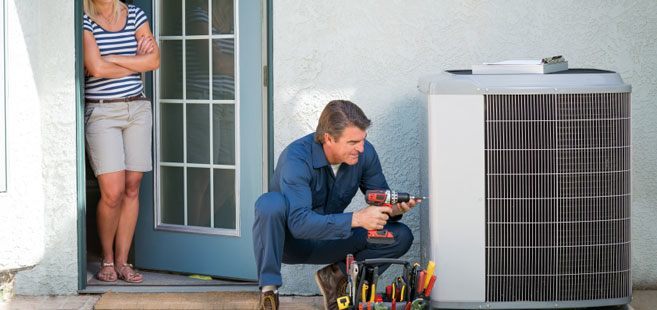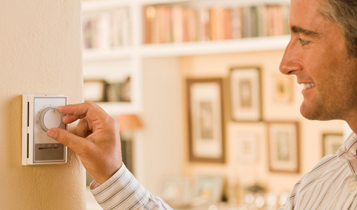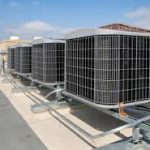Getting started
Replacing the old furnace in your central heating system with a new, more efficient model can offset volatile energy prices. Money aside, today’s furnaces pollute less and boost comfort by producing heat more steadily than older furnaces. Gas is the most common heating fuel and this report focuses on gas furnaces. (To find out which brands of furnaces are the most and least reliable, check ourfrequency of repair report from the Consumer Reports National Research Center.)
How do most people go about buying a furnace? First, they call contractors and ask for estimates. To prepare this report, we did too. More than 500 specialists in residential heating and air conditioning told us about their experiences in installing and maintaining heating equipment.
Size matters–a lot. The furnace’s specifications should fit your needs. A furnace that’s too small won’t keep your house comfortable during extremely-cold weather.
Partly to avoid that possibility, the furnaces in most homes are larger than necessary. Initial cost is only one of the drawbacks of that strategy. A furnace that’s too large will cycle on and off more frequently. That puts more wear on its components, wastes energy, and might cause the temperature to vary uncomfortably. Also, a larger replacement furnace might require larger ducts. Without the right size ducts, airflow can be noisy.
To be sure of correct sizing and a proper installation, choose a reputable contractor who will take the time to calculate your heating needs according to an industry standard such as in “Manual J HVAC Residential Load Calculation” of the Air Conditioning Contractors of America. Such calculations take into account the climate and the size, design, and construction of your house. Once the furnace is installed, maintain it regularly according to the manufacturer’s recommendations. Our survey helped to confirm this advice. When we asked about the most common reasons for service calls for furnaces, contractors cited human error–inadequate maintenance, for example, or improper installation–twice as often as defective equipment. Read our frequency of repair report for which brands or the most and least reliable.
Efficiency also matters
Gas is currently the most common heating fuel and most new central-heating systems use gas. How efficiently a furnace converts gas into heating energy is reflected in its annual fuel-utilization-efficiency (AFUE) rating, which is measured as a percentage. The higher the number, the more heat the furnace can wring from each therm of gas. Since efficient furnaces generate fewer emissions, environmental considerations might also influence your decision.
Furnaces have become more energy-efficient over the years. A gas furnace made in the early 1970s typically has an AFUE of about 65 percent. The lowest efficiency allowed by law for new gas furnaces is 78 percent, and some new models achieve 97 percent–near-total efficiency.
The price of a furnace generally rises in step with its fuel efficiency. A furnace with a 90 percent AFUE might cost $1,000 more than a similar size unit with an 80 percent AFUE. But you can often recoup that additional cost through lower fuel bills over the life of the furnace–especially in regions such as the Northeast and Midwest, where winters can be harsh. How quickly you recover the investment depends on more than just AFUE. The electricity to run furnaces with different AFUEs can vary significantly. The climate where you live, how well your home is insulated, and your local gas and electricity rates also affect payback times.
As you decide, insist that the contractor select models in a range of efficiencies and calculate the annual estimated operating cost of each model you’re considering, rather than simply estimating it. The contractor can complete those calculations by plugging information on each unit’s AFUE and electrical consumption, local utility rates, and characteristics of your home into one of several computer programs designed to easily calculate estimates. Make sure that the quotes also include the cost of any changes to venting required by any appliances in the home.
Other questions to ask the contractor: Is the model you’re considering fairly new–introduced, say, two years ago or less–and thus relatively untested? If it’s an older model, has the contractor noticed any reliability problems with it?
You can make your home more energy-efficient in several ways. Turn down the thermostat in winter; just two degrees cooler will save you money and reduce emissions by about 6 percent. You might not even feel the difference, especially at night or when you’re out of the house (a programmable thermostat can help here). Draw the curtains at night to block the chill from a cold window. Keep the windows covered on sunny days during the summer, and uncover them on sunny days during the winter to benefit from some free solar heating. Reduce heat loss from ducts by sealing leaks and, where feasible, insulating ducts.
Repair or replace?
If your gas furnace falters or fails, a few simple procedures may save you the cost and trouble of seeking professional help:
- If you’re getting low airflow, check the air filter on the furnace; a clogged filter could cut airflow to a trickle.
- See if there are loose wires or a malfunction in the thermostat. For an electronic thermostat that runs on batteries, try changing them.
- Are fuses burned out or circuit breakers tripped? If so, power may have been cut to the fan or circuit board.
- If those steps don’t work, call a heating contractor. Despite the improved efficiency of most new furnaces, it’s generally more cost-effective to repair a furnace than to replace it. However, if a key component such as the heat exchanger or control module fails, you’re probably better off replacing the furnace, especially if the unit is more than about 15 years old (furnaces typically last an average of 15 to 18 years).
Most and least reliable
If you have to replace your furnace, you’ll be glad to hear that today’s more-efficient gas furnaces can save you p to $40 for every $100 you spend on fuel compared with older models. They are also, on average, less likely to need repairs, according to our survey of subscribers, who told us about 21,132 furnaces they bought between 2008 and early 2014.
Reliability is especially important because when a furnace failed, 77 percent needed significant work. A majority of those broke down completely, with nearly a third producing no heat for more than a day. For 40 percent, the repair cost $150 or more.






